 August 11, 2016 John E. Ross, KD8IDJ, Editor
| |||||||||||
New Hamvention Venue: "You Will Be Very Impressed," Chairman Assures Dayton Hamvention® is moving on after 52 years at Hara Arena, and 2017 preparations at the show's new venue in Xenia, Ohio, now are in full swing, two Hamvention officials explained this week on the Amateur Radio Roundtable webcast hosted by Tom Medlin, W5KUB. Hamvention announced on August 1 that it would relocate to the Greene County Fairgounds, after Hara Arena made it known that it would close at month's end. Hamvention 2017 General Chair Ron Cramer, KD8ENJ, and official spokesperson Mike Kalter, W8CI, fielded questions from Medlin and callers during the hour-long August 9 show. Cramer said some members of the Amateur Radio community entertain preconceived notions about the new venue that are "far off base," and he and Kalter wanted to set the record straight.
"Change is hard for everyone, but I think this is a very good move for us," Cramer said. "You will be very impressed." Kalter echoed the sentiment. "We want to start out great and get awesome," he said. Kalter said there's been a lot of second-guessing, but that "a lot of overriding factors" and a year-long search led to the selection of Greene County Fairgrounds. Kalter assured those planning to attend Hamvention that Fairgrounds buildings -- particularly those used for showing livestock during the county fair -- are "absolutely clean" and well maintained. He and Cramer expressed confidence that everyone will find plenty of available parking and room for all traditional Hamvention activities -- more than may be evident at first glance. Vendors who have already visited the new site to get the lay of the land went away "excited," they said. At this point, no hard-and-fast decisions have been made as to how Hamvention will put the available buildings and space to use next spring, but Cramer and Kalter said the Fairgrounds staff has been especially helpful. "We're all working together now to make this happen," Kalter said. He and Cramer made clear that Hamvention officials remain open to questions and suggestions. Cramer quashed one misconception about Hara Arena. "Even though they had air conditioning," he said, "air conditioning was never used there. The doors were open, and they did not want to turn on the air conditioning unless the doors were closed. So, I don't think air conditioning was used at all -- at least in the last 10 years." Some air conditioned space already available at the new venue may be suitable for such activities as forums, and the Fairgrounds is looking to upgrade existing ventilation systems in non-air conditioned buildings. "We're looking at the possibility of air conditioned 'chalets'" for forums, Kalter said.
The prime area under consideration for the popular outdoor flea market is inside the racetrack oval, they said, and additional adjacent space is available, if it's needed. The venue will have wireless Internet coverage. "We've already moved some of the equipment out of Hara, and we think it will do a good job there," Cramer said. Kalter added that the Fairgrounds staff is working on upgrading the Internet "pipe" to the venue. As for the admission price, "We're still working on that," Kalter said. "We have not made a decision. We may leave it at the same price or slightly more than that, but no great increase." Tickets this year were $20 in advance and $25 at the gate for all 3 days. Cramer and Kalter said Hamvention anticipates being ready to start selling tickets and vendor spaces by November -- and perhaps earlier. Kalter stressed that the sponsoring Dayton Amateur Radio Association (DARA) puts "an awful lot back into ham radio in donations," all raised entirely through Hamvention. "We need your help. We need your support," Kalter said. "Hamvention needs to move on, and we intend to make it happen, with everybody's help." Growth in New Amateur Radio Licensees Ahead of Last Year's The ARRL Volunteer Examiner Coordinator (VEC) reports that 20,447 new US Amateur "While I am thrilled with this prospect, I'm also keenly aware that without some mentoring, these new hams' initial curiosity and enchantment may fade if they don't get on the air right away," said ARRL VEC Manager Maria Somma, AB1FM. "Let's show these new hams what the magic is all about," she urged. In addition, the ARRL VEC reports that upgrades are on track to reach nearly 11,000 by year's end. Amateur Radio Sleuthing Pins Down Source of Strange RF Interference Police in Evanston, Illinois, contacted the ARRL Lab, after an apparent interference source began plaguing wireless vehicle key fobs, cell phones, and other wireless electronics. Key fob owners found they could not open or start their vehicles remotely until their vehicles were towed at least a block away, nor were they able to call for help on their cell phones when problems occurred. The police turned to ARRL for help after striking out with the FCC, which told them it considered key fob malfunctions a problem for automakers, although the interference was affecting not just key fobs but cell phones -- a licensed radio service. ARRL Lab EMC Specialist Mike Gruber, W1MG, feels the FCC should have paid more attention.
"This situation is indicative of what can happen as a result of insufficient FCC enforcement, especially with regard to electrical noise and noncompliant consumer devices," Gruber said. Evanston authorities worried that a serious situation could develop if someone were unable to call 911, putting public safety at risk. They also were concerned that the RFI could be intentional and indicate some nefarious or illegal activity. Given the seriousness of this situation, Gruber contacted Central Division Director Kermit Carlson, W9XA, to ask if he could look into the matter. On June 2, Carlson met with an Evanston police officer, her sergeant, a local business owner, and the local alderman, and he quickly confirmed that the 600 block of Dempster Avenue in Evanston was plagued with an odd RFI problem. Carlson determined that the problem prevailed along a set of eight on-street parallel parking spots in the downtown commercial district of the North Chicago suburb. Carlson employed a Radar Engineers 240A Noise Signature Receiver and UHF Yagi antenna to survey the affected block. Since key fobs typically operate at around 315 MHz and 433 MHz, he looked on both frequencies. The survey identified several noise sources in the affected block, but in particular a strong signal in the middle of the block. The interference source turned out to be a recently replaced neon sign switching-mode power supply, which was generating a substantial signal within the on-street parking area just across the sidewalk, between 8 and 40 feet from the sign.
The problematic power supply interference also disabled Carlson's cell phone when he was within a few feet of the device. Carlson anticipated that further investigation would show that the harmful interference could disrupt licensed radio services in close proximity. The troublesome transformer was not replaced, but the building owner agreed to turn off the sign should problems arise. Carlson called the Evanston case "a particularly alarming example of radio interference," especially since local authorities considered it a public safety matter. "This situation demonstrates the electromagnetic compatibility problems that are evolving in an atmosphere of noncompliant, unintentional RF-emitting devices," he said. A return visit to the area with calibrated antennas and equipment capable of measuring the radiated signal strength with quasi-peak detection is planned for later this year. Since the initial visit, several other instances of unexplained key fob malfunctions have been reported in the Greater Chicago area. -- Thanks to Kermit Carlson, W9XA, and Mike Gruber, W1MG The Doctor Will See You Now! "SWR" is the topic of the current episode of the "ARRL The Doctor is In" podcast. Listen...and learn!
Every 2 weeks, your host, QST Editor in Chief Steve Ford, WB8IMY, and the Doctor himself, Joel Hallas, W1ZR, will discuss a broad range of technical topics. You can also e-mail your questions to doctor@arrl.org, and the Doctor may answer them in a future podcast. Enjoy "ARRL The Doctor is In" on Apple iTunes, or by using your iPhone or iPad podcast app (just search for "ARRL The Doctor is In"). You can also listen online at Blubrry, or at Stitcher (free registration required, or browse the site as a guest) and through the free Stitcher app for iOS, Kindle, or Android devices. If you've never listened to a podcast before, download our beginner's guide. Just ahead: Software Defined Radio. National Parks on the Air Update The Great South Bay Amateur Radio Club put on a first-class activation of the White House Ellipse, which counts for President's Park (DZ10) in ARRL's National Parks on the Air (NPOTA) program. After considerable effort to secure a permit from the National Park Service, the club set up two stations on the Ellipse on August 5 and 6 and made more than 1200 HF contacts on SSB and CW. AMSAT-NA Secretary Paul Stoetzer, N8HM, also handed out the unit on several Amateur Radio satellite passes.
For August 11-17, there are 33 Activations on tap, including the first-ever activation of Gates of the Arctic National Park in Alaska, and Wupatki National Monument in Arizona. Details about these and other upcoming activations can be found on the NPOTA Activations calendar. Keep up with the latest NPOTA news on Facebook. Follow NPOTA on Twitter (@ARRL_NPOTA). Reminder: Youth in Amateur Radiosport Survey Ends August 31 Only a couple of weeks remain to add your voice to the Youth in Amateur Radiosport Survey. The deadline to provide your input is August 31. ARRL Contest Advisory Committee Chair George Wagner, K5KG, reports that more than 1000 already have responded, but he'd like to see many more by the end of August.
Wagner said retired statistician Bob Gerzoff, WK2Y, has volunteered his services to assist the CAC's Youth in Contesting team in analyzing the survey results. The Youth in Contesting team consists of Pat Korkowski, NA0N; Glenn Johnson, W0GJ; Stan Stockton, K5GO, and Dennis Egan, W1UE. Visit the online survey to participate. HAARP Facility to Reopen in 2017 under New Ownership Alaska's High-Frequency Active Auroral Research Program (HAARP) facility will reopen in 2017. The sprawling facility now is under the ownership of the University of Alaska Fairbanks (UAF), and the UAF Geophysical Institute is preparing HAARP for a new sponsored research campaign that's set to begin early next year, UAF Researcher Chris Fallen, KL3WX, told ARRL.
"This involves, for example, reinstalling the vacuum tubes in each of the 10 kW amplifiers -- eventually 360 in total -- that were removed by the US Air Force [the facility's former owner] for warm storage in the main facility," Fallen said. He later clarified that's just one-half of the 720 tubes required to equip all of HAARP's transmitters. "For the first campaign we will only be bringing half of the array online, as we will only have half the tubes installed," he explained. "It's a long process and we have limited resources." He noted that the transmitter shelters have been unheated since the previous campaign in the summer of 2014. "The five generators -- approximately 3 MW each -- have recently been tested individually and are verified operational." Fallen said the HAARP ionosonde (DPS4D "Digisonde") will be brought back online. "Some instruments on site need to be repaired or replaced," he said. Those would include riometers and a UHF radar. "Optical instruments will be brought back. The flux-gate magnetometer is operational again."
Fallen said other researchers are planning to install instruments at the science pads. "We are still investigating models for increasing Amateur Radio involvement with HAARP, which, in addition to announcing operating schedules, can potentially include hosting one or more ham stations on or near the science pads," he said. UAF describes HAARP as "the world's most capable high-power, high-frequency transmitter for study of the ionosphere." Built in three phases, starting in the early 1990s and continuing through 2007, at a cost of some $300 million, HAARP over the years has inspired a wide range of conspiracy theories that became grist for late-night radio talk shows. Some have claimed that HAARP's transmitters and 30-acre antenna farm -- capable of generating up to 5 GW ERP -- have been used to control the weather, while others have argued that HAARP has caused earthquakes. The FCC recently granted two Part 5 Experimental Service licenses for HAARP ionospheric research "across multiple bands." WI2XFX will cover experiments in discrete parts of the HF spectrum, including 2650-2850; 3155-3400; 4438-4650; 4750-4995; 5005-5450; 5730-5950, and 7300-8100 kHz. A second Experimental license, WI2XDV, covers ionopheric research between 1 and 40 MHz.
UAF is hosting an open house at HAARP, located near Gakona, Alaska, on August 27. The event will feature facility tours, a mobile planetarium, a permafrost exhibit, science demonstrations and talks, and barbecue. Fallen will deliver a free science lecture on Friday, August 26, at the Wrangell-St Elias National Park Visitor Center Auditorium, "Radio Modification of the Ionosphere, and Who Uses This HAARP Thing Anyway?" in partnership with the Wrangell Institute for Science and the Environment (WISE) HAARP is aimed at studying the properties and behavior of the ionosphere. Operation of the research facility was transferred from the US Air Force to the University of Alaska Fairbanks last August, allowing HAARP to continue exploring ionospheric phenomena via a land-use cooperative research and development agreement. -- Thanks to Chris Fallen, KL3WX, Steve Floyd, W4YHD, and UAF Amateur Radio Plays Critical Role in Mountain Rescue Glenn Fowler, N5TDJ, of Allen, Texas, reported via Facebook that Amateur Radio served him well on August 4.
"We were on a treacherous Jeep trip up at about 13,000 feet with several other Jeeps in Colorado," he said in his post. "One person there from Texas had a heart attack. There was no cell phone service. I tried a few repeaters and the National Simplex Frequency and was amazed that no one was monitoring any of them. I kept trying and finally reached an ARES station on a Breckenridge linked repeater that took our GPS coordinates and dispatched an ambulance to meet us at the first place they could intercept the trail." Fowler reports the individual who suffered the heart attack was hospitalized, "and, thankfully, he received lifesaving help from paramedics a lot sooner, due to ham radio." An ARRL member, Fowler also belongs to the Plano Amateur Radio Club (K5PRK). ARES® Day in Palm Beach County Recruits 15 New Members It was ARES® Day on July 30 in Palm Beach County, Florida. Sponsored by Palm Beach County ARES, the event at the Palm Beach/Martin County Red Cross Chapter in West Palm Beach attracted 50 radio amateurs, and 15 joined ARES. The Red Cross provided lunch.
Local ham radio clubs were represented at the event and offered assistance, along with District Emergency Coordinator Charlie Benn, WB2SNN; South County Emergency Coordinator Bob Vastola, KK4ATI; North County Emergency Coordinator Chris Anderson, KK4ENJ, and Porter. Section Manager Jeff Beals, WA4AW, and Section Emergency Coordinator Larry Zimmer, W4LWZ, attended. Activities included demonstrations of emergency power equipment, digital communications using packet and Winlink, National Traffic System⢠and NTS⢠digital communication, how to build an effective UHF/VHF antenna, portable VHF and UHF antennas, and what's inside a Red Cross Emergency Response Vehicle. -- Thanks to Barry Porter, KB1PA. New SO-50 Distance Record Set in Youth DX Adventure Contact When Patrick Stoddard, WD9EWK, in Phoenix, Arizona, worked Faith Hannah Lea, AE4FH -- on Saba and operating as PJ6Y -- the contact broke the distance record on the SO-50 (SaudiSat) satellite.
The August 7 Arizona-to-Saba contact came in at 5168.753 kilometers (approximately 3205 miles)! Faith Hannah was among the young radio amateurs who took part in the 2016 Dave Kalter Memorial Youth DX Adventure (YDXA), at the station of Jeff Jolie, PJ6/NM1Y. In addition to Faith Hannah, this year's youth team included Morgan Croucher, KD8ZLK and Ruth Willet, KM4LAO. Escorting them were Joe Binkley, KD8YPY; Sharon Willet, KM4TVU, and James Lea, WX4TV, who is Faith Hannah's father. The budding DXers/DXpeditioners were on the air from Saba from August 2 until August 9. The members of the 2016 Dave Kalter Memorial Youth DX Adventure group logged more than 3000 contacts during their stay on Saba, operating as PJ6Y. ARISS US Team to Host ARISS-International Summit The US Amateur Radio on the International Space Station (ARISS) team will host the ARISS-International "face-to-face" summit in the Houston, Texas, area this fall. A highlight of the November 15-18 gathering will be a tour of NASA Johnson Space Center (JSC) -- across the street from the meeting site at the ISS Conference Facility, 1800 Space Park Drive, Nassau Bay, Texas. Members of the public may attend as observers.
This year's meeting will focus on the ARISS hardware development project and future initiatives, sustaining the ARISS program through strategic partnerships and fundraising, and improving educational outcomes. Anyone interested in attending the ARISS-International meeting November 15-18 may contact Rosalie White, K1STO, or ARISS-International Chair Frank Bauer, KA3HDO. -- Thanks to ARISS Tuskegee Airman, Congressional Gold Medal Recipient Julius T. Freeman, KB2OFY, SK Tuskegee Airman and Congressional Gold Medal recipient Julius T. Freeman, KB2OFY, of Spring Garden, New York, died on July 22 after suffering a heart attack. He was 89. Originally from Lexington, Kentucky, Freeman served during World War II as a medic with the famed 332nd Tuskegee Airmen. He was a frequent speaker at schools and civic organizations.
When Freeman returned home after his wartime service, he was dismayed to find that widespread segregation and the Jim Crow Era persisted. As a personal protest, he discarded his Army uniform and military memorabilia, not acknowledging his military service again until many years later. A flamboyant and highly successful car salesman, Freeman began his career at a Columbus, Ohio, Hudson Motorcar dealership; during the war, Freeman had saved the grateful owner's son's life. So successful was Freeman in this venture that he became the first African-American spokesperson to appear in TV commercials in Ohio. In 1954, he was lured to New York with hopes of greater success, but he found no jobs for African-American car salesmen. So, he went to work emptying trash cans on the graveyard shift at the Empire State Building. A few years later, though, he broke back into auto sales, again achieving success. In 1977 he sold more than $1 million worth of Lincolns. Freeman also became the car salesman to such African-American celebrities as Sammy Davis Jr, James Brown, Dick Gregory, Joe Louis, and Wilson Pickett. He retired in 2008, although he appeared in a 2015 commercial for a Long Island Honda dealership. In 2007 President George W. Bush awarded Freeman and the other "Red Tails" the Congressional Gold Medal, although Freeman was too ill to attend the ceremony, which honored the estimated 16,000 or more Tuskegee Airmen. Freeman once again embraced his military past, visiting schools and educating youth about the role that the Tuskegee Airmen had played. A Technician licensee, Freeman had been an ARRL member in the 1990s. -- Thanks to John Bigley, N7UR/Nevada Amateur Radio Newswire In Brief...
. . . . .
The K7RA Solar Update Tad Cook, K7RA, Seattle, reports: After 2 days (August 3-4) of no sunspots, solar activity resumed with both the sunspot number and the solar flux rising into the 90s. Average daily sunspot numbers rose from 10.7 during the last reporting week to 52 the next reporting week (August 4-10).
The latest solar flux prediction from USAF/NOAA shows 95 on August 11-12; 90 on August 13-15; 95 on August 16-18; 90 and 85 on August 19-20; 75 on August 21-26; 80 on August 27-September 1; 85, 95, 100, and 105 on September 2-5; 100 on September 6-9, and 95 on September 10-13. Flux values are predicted to drop to 75 over September 17-22 before rising again. Predicted planetary A index is 12 and 10 on August 11-12; 5 on August 13-14; 8, 12, and 10 on August 15-17; 8 on August 18-19; 5 on August 20-23; 15 on August 24-25; 5 on August 26-28; 15, 25, and 18 on August 29-31; 15 on September 1-2; 12, 8, and 5 on September 3-5; 12 on September 6-7; 8 on September 8; 5 on September 9-10, and 12 on September 11-12. Sunspot numbers for August 4 through 10 were 0, 36, 33, 63, 91, 72, and 69, with a mean of 52. The 10.7 centimeter flux was 76.3, 79.8, 83.1, 92.7, 96.4, 92.3, and 95, with a mean of 87.9. Estimated planetary A indices were 18, 16, 14, 12, 12, 14, and 16, with a mean of 14.6. Estimated mid-latitude A indices were 17, 16, 13, 12, 9, 15, and 14 with a mean of 13.7. Send me your reports and observations. Just Ahead in Radiosport
See the ARRL Contest Calendar for more information. For in-depth reporting on Amateur Radio contesting, subscribe to The ARRL Contest Update via your ARRL member profile e-mail preferences. Upcoming ARRL Section, State, and Division Conventions
Find conventions and hamfests in your area.
. .
Subscribe to...
Free of charge to ARRL members...
| |||||||||||
.JPG)
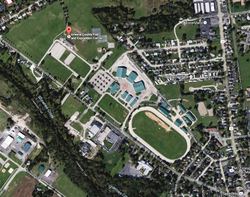
.png) Radio licenses have been issued since January 1. That's nearly 1500 ahead of the number that had been issued by this time last year. At the present pace, the US is on track to exceed 30,000 new radio amateurs for the third straight year by the end of the year.
Radio licenses have been issued since January 1. That's nearly 1500 ahead of the number that had been issued by this time last year. At the present pace, the US is on track to exceed 30,000 new radio amateurs for the third straight year by the end of the year.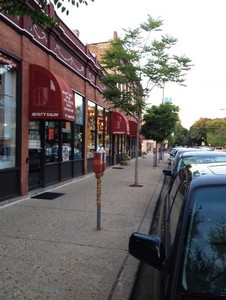

.jpg) Sponsored by
Sponsored by 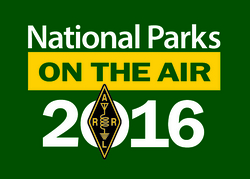 Kudos to the Rogers High School Amateur Radio Club (W1VRC) in Newport, Rhode Island, for a successful activation of the Touro Synagogue National Historic Site (AA24). The high school club teamed up with the Middletown All Saints STEAM Academy's ham radio club (N1ASA) to make the August 7 activation a success.
Kudos to the Rogers High School Amateur Radio Club (W1VRC) in Newport, Rhode Island, for a successful activation of the Touro Synagogue National Historic Site (AA24). The high school club teamed up with the Middletown All Saints STEAM Academy's ham radio club (N1ASA) to make the August 7 activation a success.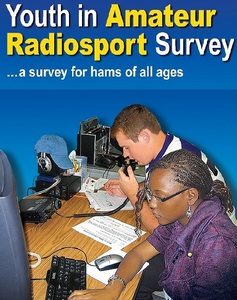
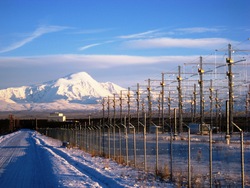
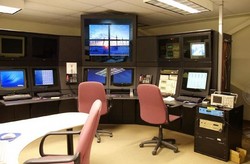
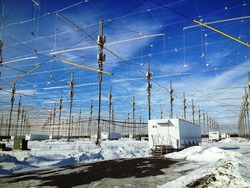

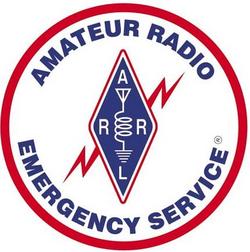 "Thanks to the Red Cross and all who attended," said Central County Emergency Coordinator Barry Porter, KB1PA. "Palm Beach County ARES is now more prepared if we are needed by any of our served agencies. It was a positive event that energized all who attended."
"Thanks to the Red Cross and all who attended," said Central County Emergency Coordinator Barry Porter, KB1PA. "Palm Beach County ARES is now more prepared if we are needed by any of our served agencies. It was a positive event that energized all who attended."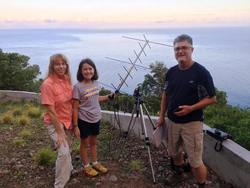
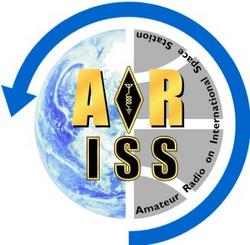 The ARISS-International meeting will follow on the heels of the
The ARISS-International meeting will follow on the heels of the .JPG)
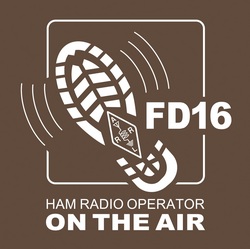 ARRL Field Day 2016 List of Logs Received Now Available: The list of
ARRL Field Day 2016 List of Logs Received Now Available: The list of  Updated Android Digital QST App Now Available: A completely rebuilt digital QST app for the Android platform now is available from publisher Nxtbook Media, which responded to readers' frustrations about getting the app to work properly. The fix took longer than expected, but it is finally here! Members who have enabled automatic updates on their devices will not have to do anything; the application will update automatically. Readers who have automatic updates turned off can obtain the new version by visiting the
Updated Android Digital QST App Now Available: A completely rebuilt digital QST app for the Android platform now is available from publisher Nxtbook Media, which responded to readers' frustrations about getting the app to work properly. The fix took longer than expected, but it is finally here! Members who have enabled automatic updates on their devices will not have to do anything; the application will update automatically. Readers who have automatic updates turned off can obtain the new version by visiting the  Slow-Scan Television Transmissions from ISS Set for August 15-16: Slow-scan television (SSTV) transmissions will be made from the International Space Station (ISS) on August 15 and 16. The MAI-75 Experiment will transmit SSTV images on 145.80 MHz over the course of a few orbits as the space station passes over Moscow. Operators in Europe and South America will have the best chances to receive images. Operators along the US East Coast may have one chance on August 16. -- Thanks to ISS Ham Project Coordinator Kenneth Ransom, N5VHO
Slow-Scan Television Transmissions from ISS Set for August 15-16: Slow-scan television (SSTV) transmissions will be made from the International Space Station (ISS) on August 15 and 16. The MAI-75 Experiment will transmit SSTV images on 145.80 MHz over the course of a few orbits as the space station passes over Moscow. Operators in Europe and South America will have the best chances to receive images. Operators along the US East Coast may have one chance on August 16. -- Thanks to ISS Ham Project Coordinator Kenneth Ransom, N5VHO 
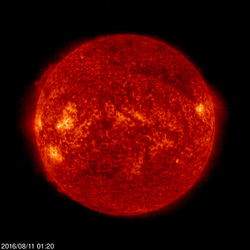 Average daily solar flux rose from 72.1 to 87.9. Average planetary A index went from 13 to 14.6, and average mid-latitude A index from 11.9 to 13.7.
Average daily solar flux rose from 72.1 to 87.9. Average planetary A index went from 13 to 14.6, and average mid-latitude A index from 11.9 to 13.7.







